I have a gas oven which connects to a metal gas pipe, this oven can be considered grounded through the gas pipe, (the oven is not grounded in any other way).
I also have an electrical oven which does not connect to the gas oven and it is elevated/sitting on a wood enclosure, it has a voltage on its chassis relative to the gas oven as 110VAC (220VAC is in the sockets). I think the voltage on the chassis is there because the chassis is a ground of a capacitor used in the AC->DC convertor for oven's digital clock and logic board (see accepted answer here - Lack of Earth wire if you think this is a ground fault - it's not). This oven is not grounded in any way, so the leakage current will shock you if you touch both the gas oven and the electrical oven at the same time.
However, I also measure 50VAC between me and the electrical oven when I stand on the floor barefoot, it drops to about 20VAC if I sit and raise my feet above the floor or put on rubber slippers, so the less connection I have to the floor the less voltage difference there is between me and the electrical oven. If I touch the gas oven with one hand, the voltage difference between me and electrical oven is 110VAC . So, obviously, the less resistance I have to the ground the more voltage I measure.
Why does adding resistance causes the voltage reading on a DMM to decrease in an OPEN circuit? This is not a closed circuit when I only touch the ground as the electrical oven is elevated (it does not touch the ground).
I was actually expecting that the voltage difference between me and and electrical oven would be 100VAC even if I don't touch the gas oven, considering there's a 10VAC difference between me and the gas oven when the only thing I touch is the floor.
The circuit as I think of it:

simulate this circuit – Schematic created using CircuitLab
P.S. I don't have grounding in the building because it's old and the wiring has never been updated, the system used is TN-C, there are only two wires in the sockets, hot and neutral.